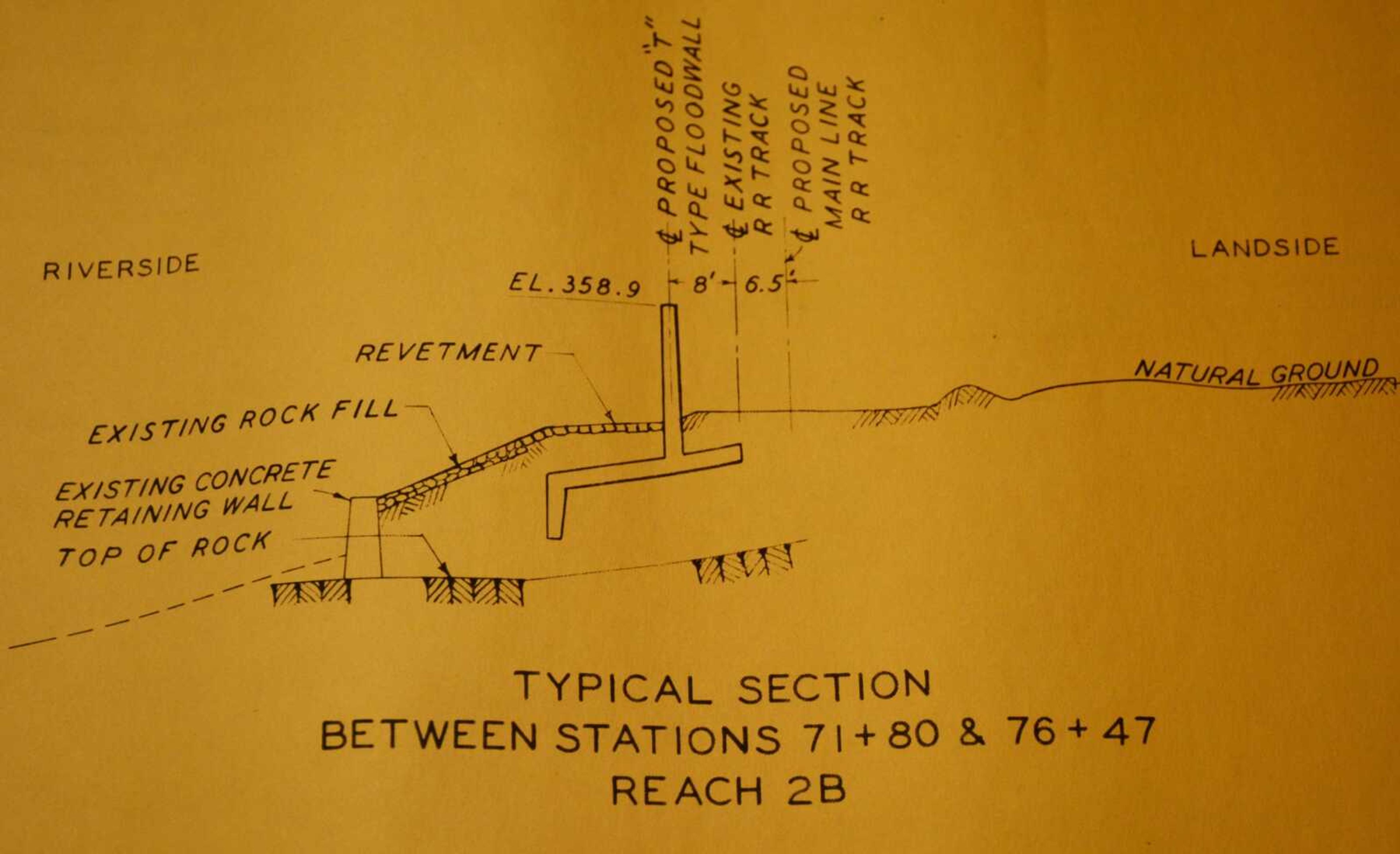The big debate over whether to build a floodwall
Cape Girardeau has had a love-hate relationship with the floodwall since it was built. The wall has protected the downtown business district from numerous floods, but the hulking structure has also cut off the town from the scenery of the Mississippi River. Elmore Leonard chose to set his novel "Killshot" in Cape because he thought the floodwall resembled a prison wall...
Cape Girardeau has had a love-hate relationship with the floodwall since it was built. The wall has protected the downtown business district from numerous floods, but the hulking structure has also cut off the town from the scenery of the Mississippi River. Elmore Leonard chose to set his novel "Killshot" in Cape because he thought the floodwall resembled a prison wall.
Over the years, several proposals were discussed to prevent downtown flooding. Following the 1927 flood, three ideas were pitched: building a concrete wall, demolishing the buildings along Water Street, or raising the railroad tracks. In 1935, the U.S. Army Corps of Engineers conducted a survey to look at the possibility of building 1.5 miles of levees to protect the southern end of town.
Although World War II interrupted any planning, a series of floods starting in 1943 lent more urgency to finding a solution. Army engineers leaned toward building a "sea wall" that would provide protection to a level of at least 49 feet on the Cape gauge.
This plan was not popular. Downtown property owners were unhappy with the prospect of facing an ugly wall. City leaders were apprehensive about the need to operate costly pumping stations to drain rainwater during flood periods.
Eddie Erlbacher proposed a competing plan: raising Main Street to a level of 44 feet by means of a "hydraulic fill" process. Downtown buildings would be redesigned so that the second floor would become the ground floor. To provide additional protection, a short 3-foot wall could be built as part of a riverfront boulevard.
Bernard McMahon, a St. Louis architect, was hired to develop the "Erlbacher Plan." He had previously designed the "Boat House" for the Erlbachers on West End Blvd.
In June 1944, almost all downtown property owners signed on to the Erlbacher Plan. At a meeting, Rush H. Limbaugh argued that the plan was a "far-reaching idea that will assure this city its leadership in the future." He pointed out that the riverfront boulevard could become "part of the great Mississippi River parkway system proposed for the future."
The city council endorsed a version of the Erlbacher Plan in May 1945, but federal officials continued to push for a concrete floodwall that would provide higher flood protection. A third alternative, abandoning Main Street, was also considered, but few people had the stomach for such a drastic solution.
In 1947, yet another flood forced the issue. This time, the windows in buildings were knocked out by the waves from passing boats, forcing the government to issue a warning to pilots to exercise caution.
The Corps of Engineers won the argument and proceeded with a plan for a floodwall and levee system. After it took several years to secure funding, construction started in 1956. The entire project was dedicated on Oct. 22, 1964.
Although the wall has been a success against flooding, it's fun to imagine how much different Cape would look today if the Erlbacher Plan had been adopted instead.
Connect with the Southeast Missourian Newsroom:
For corrections to this story or other insights for the editor, click here. To submit a letter to the editor, click here. To learn about the Southeast Missourian’s AI Policy, click here.









